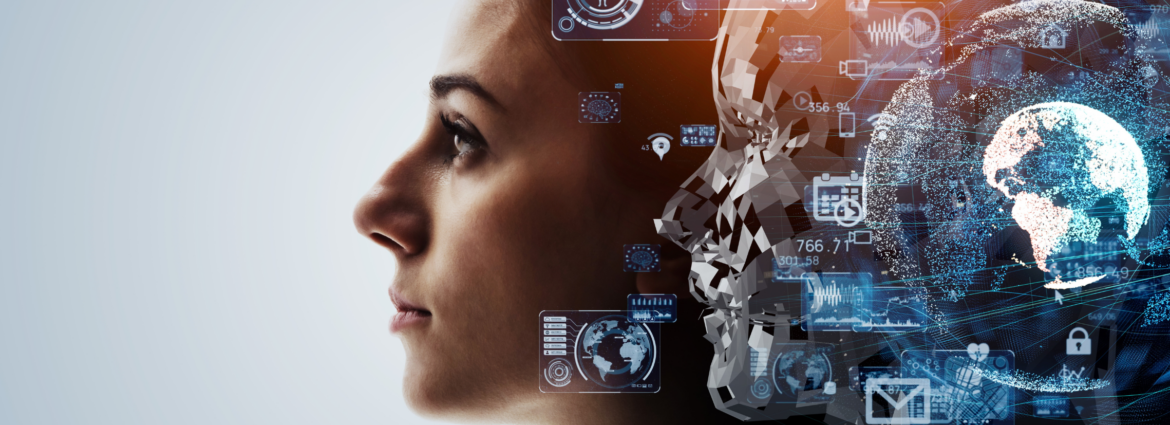rtificial Intellect and Fiscal Addition: Broadening Entry to Business banking Professional service
In times of disasters and humanitarian crises, speedy and powerful reaction is essential to lessen casualties, relieve struggling, and bring back areas to normalcy. In recent times, the incorporation of synthetic learning ability (AI) into tragedy healing efforts has surfaced being a potent resource for boosting readiness, response, and recovery operations. From predictive statistics and early warning techniques to look and save quests and facilities analysis, AI-driven technological innovation are revolutionizing the way we reply to disasters and support impacted communities. In this article, we'll explore how umela inteligence is facilitating alleviation attempts and improving tragedy rehabilitation benefits around the world.

Predictive Statistics and Earlier Forewarning Techniques: AI techniques can examine vast amounts of data, such as weather conditions habits, seismic process, and ancient failure information, to calculate and expect possible threats and disasters. By figuring out risks and very early indicators, AI-run predictive stats tracking allow respective authorities to problem well-timed alerts and evacuation purchases, permitting inhabitants to put together and evacuate before catastrophes strike. Search and Rescue Procedures: Within the aftermath of problems such as earthquakes, severe weather, or flooding, AI-operated drones and robots may be deployed to conduct lookup and rescue operations in unsafe or not reachable locations. Built with devices, camcorders, and AI techniques, these unmanned techniques can survey tragedy-affected regions, detect signs of existence, and identify the place of survivors, allowing rescue teams to prioritize their endeavours and preserve day-to-day lives more efficiently. Injury Examination and Facilities Tracking: AI technology, including satellite imagery assessment and remote control sensing, offers genuine-time monitoring and evaluation of facilities damage and environmental effects carrying out a catastrophe. AI sets of rules can assess satellite graphics, aerial photos, and sensing unit details to recognize broken structures, streets, bridges, and resources, allowing authorities to prioritize rehabilitation efforts and allocate sources effectively. Tragedy Reply Coordination: AI-powered methods can aid control and connection among catastrophe answer firms, government agencies, NGOs, and volunteers. AI algorithms can assess info from several places, for example social media, reports reviews, and urgent calls, to distinguish areas of require, coordinate logistics, and deploy assets effectively. AI-pushed chatbots and internet assistants also provide real-time information and facts and help to afflicted folks, helping to alleviate misunderstandings and uncertainty during crises. Group Strength and Recuperation Planning: AI technology supports long term recovery efforts by analyzing info on group demographics, infrastructure, and socio-financial elements to tell durability planning and reconstruction endeavours. AI-driven designs can mimic various rehabilitation scenarios, look at the probable effects of different treatments, and prioritize assets in structure, homes, and interpersonal services to build a lot more strong communities. Humanitarian Assist and Source Allocation: AI algorithms can improve the allocation and distribution of humanitarian support and sources in tragedy-affected regions. By studying data on populace demographics, needs assessments, and supply chain logistics, AI-run techniques can determine priority areas for help, optimize provide ways, and make sure that support actually gets to those who require it most inside a well-timed and efficient method. Community Overall health Security and Illness Outbreak Reply: In the wake of disasters, AI-driven systems supports general public well being security and disease outbreak response efforts. AI algorithms can analyze well being info, environment situations, and condition transmission designs to identify and check potential episodes of transmittable conditions, allowing authorities to implement focused interventions and prevent the spread of illness in failure-affected areas.

In summary, man-made intelligence is revolutionizing failure rehabilitation initiatives by maximizing readiness, reaction, and durability within the face of natural disasters and humanitarian crises. By utilizing AI-powered technologies for predictive google analytics, look for and rescue surgical procedures, injury analysis, coordination, strength organizing, humanitarian help, and open public well being monitoring, we can easily improve failure healing benefits and help afflicted neighborhoods in rebuilding their day-to-day lives and livelihoods. Nevertheless, it's necessary to approach AI-motivated tragedy recovery initiatives with susceptibility, integrity, and inclusivity, making sure they prioritize the wants and well-being of affected individuals and neighborhoods and contribute to creating much more tough and sustainable communities in the future.